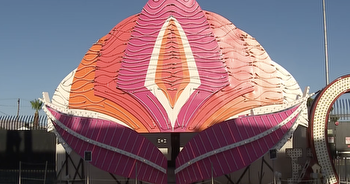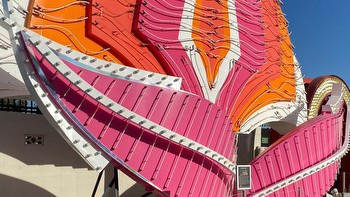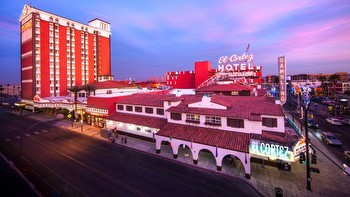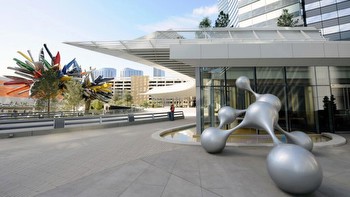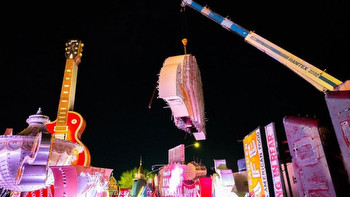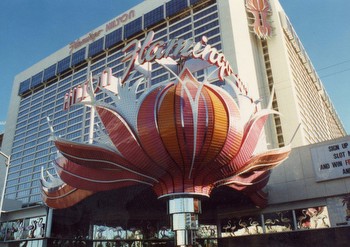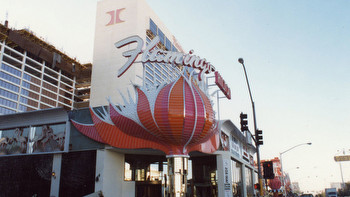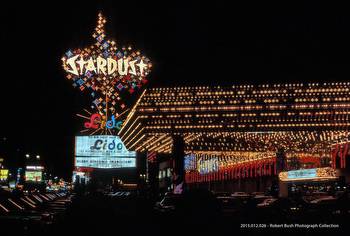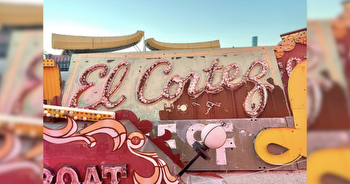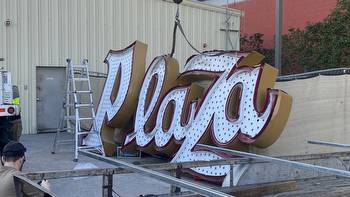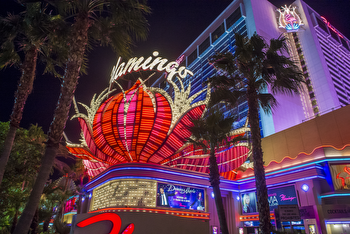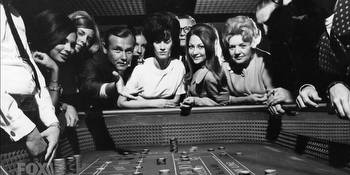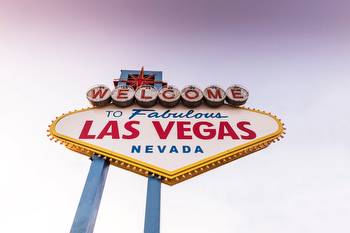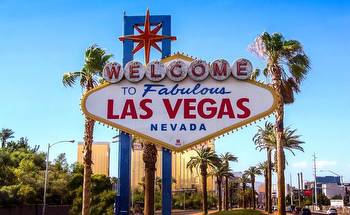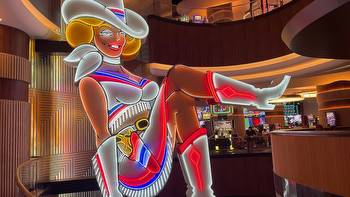Neon Museum set to restore three former Flamingo signs in Las Vegas
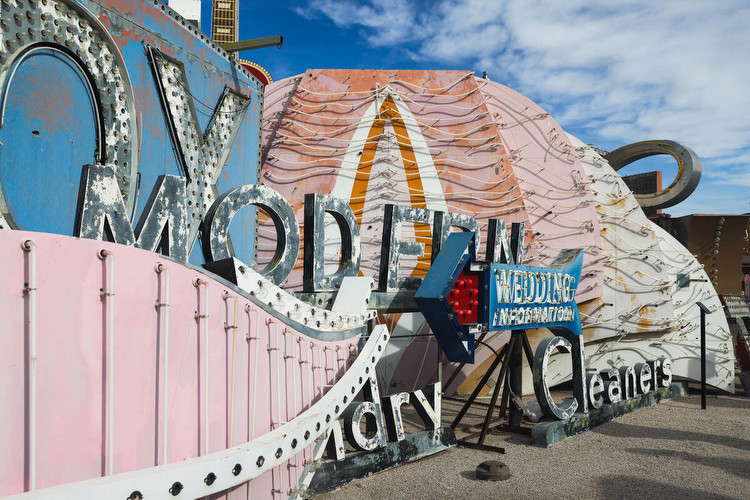
The Neon Museum is set to restore three signs that made up the iconic exterior of the Flamingo for more than 25 years.
The three signs made up the bright pink and red exterior of the Flamingo and were at the property during the last quarter of the 20th century. The largest of the three signs is the main pylon sign that included pink and red plumage that was installed at the Flamingo in 1967. Two other smaller neon feather signs installed in 1976 that complimented the main pylon sign also are being restored.
Restoring these signs was a high priority for the Neon Museum since they can help showcase the neon restoration process and tell the story of Las Vegas and the oldest operating property on the Strip, said Aaron Berger, executive director of the Neon Museum.
“There’s an opportunity to actually showcase the original 1967 neon that is in there,” Berger said. “But I think most importantly the Flamingo is the oldest casino still operating on the Strip … being able to tell the stories of everything from (the Flamingo’s) origin story, it’s mob history, but it’s an entertainer’s story, it’s a story of influence for everything from television, to movies to writers.”
These signs were pulled from the Flamingo’s main display in 2003 when a remodel was done at the property and the signs were transferred to the Neon Museum at the time, said Emily Fellmer, senior collections manager for the Neon Museum.
The signs should be fully restored and on display at the Neon Museum by May 2024, Berger said. He didn’t disclose the exact costs of the restoration efforts but said it’s in the six-figure range, which is more than other restoration projects the Neon Museum has taken on, although those projects focused on smaller signs.
The restoration process will be a “massive undertaking,” Berger said, to accurately restore the paint and neon on the signs to what they looked like on the Strip. The signs also have some original neon intact but the Neon Museum needs to determine how much of that original neon is still usable and what needs to be replaced, he said.
“We have to do a lot of research and try to find what’s available both in other architectural and historical documents that we can find to make sure that what we bring back to life is historically accurate, so it’s not an interpretation,” he said.
The Neon Museum is relying on three main donors to cover the costs of restorations for the signs. One of the donors is Emily Conner Cooper, the wife to the late entertainer Pat Cooper who passed away earlier this year. Conner Cooper said she discovered the old Flamingo signs on a tour at the Neon Museum and wanted to restore the signs to help tell Las Vegas’ history and since her husband’s first performance in Las Vegas was 60 years ago and was at the Flamingo.
“I didn’t even know these existed, I just thought ‘Oh my god, that old plume sign was so beautiful, you know what a shame it’s gone,’” Conner Cooper said. “And then to be able to light up these pieces again to me, it’s just very exciting and it’s very emotional.”
The other donors are Andrew Pascal, CEO of the online game company PLAYSTUDIOS, and Felicia French, CEO of the textile company Opuzen. Both Pascal and French said they wanted to donate to the project in order to help tell a rich part of Las Vegas history.
“I don’t think there’s a better way to tell its story than through its signs; it’s such a central part of its overall identity,” Pascal said. “It’s something that everybody’s been struck by and has memories of their favorite marquees and the lights that really define what Las Vegas is.”








